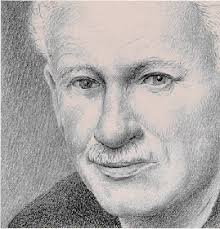Too often political reporters are reluctant to use the kind of everyday language we might apply to people who have lost touch with reality.
American journalists covering this political campaign are facing the challenge of reporting on one of the candidates who repeats fictions that are sometimes so ludicrous that they probably should be reported as the ravings of a man who has lost touch. The problem is that strait journalism in the legacy press—sources ranging from CNN to the Associated Press—tends to grant rough equivalency between candidates running for office. Does it violate journalistic rules to call out the one who no longer lives in the reality-based world?
Too often these days candidate Donald Trump does not feel tethered to even an approximation of the truth in the observations and accusations that show up in a typical stump speech. For example, he recently noted that his crowd size was up to 30 times larger than his competitor’s rallies. That implies numbers larger than would fit in a stadium for the Superbowl. In addition, he has asserted that the Harris campaign is using A.I. to make her crowds look bigger. As we all know, the former reality show star puts a lot of stock in audience sizes. Other recent fictions include the statement that thousands outside a half-empty hall were still trying to get in (not so, according to the Associated Press), or that he has spoken to the biggest audiences in American history, including those that crowded the national mall to hear Martin Luther King in 1963.
Trump is a fantasist. The lies stack up like so much cord wood at a lumber mill. But except for a few set pieces with the latest lists of “bizarre claims” most of his muddled thinking gets lost in routine synoptic coverage.
A Bias Toward Coherence
The problem here is an old one for those assigned to describe various sides of a dispute. As The Atlantic’s editor Jeffrey Goldberg has described it, journalism has a “bias toward coherence,” where reported events are cleaned up in the retelling. He recently noted that we get “careful circumlocutions instead of stunned headlines” that might better account for all the fantasies that get passed on as fact.
Trump escapes the full effects of fully revealing journalism by being protected by two norms of journalism: a bias for equivalency, and a second and natural norm to frame most events as stories, which curbs the impulse to let the actual incoherence of an event remain. This is partly Goldberg’s point.
![]() The first norm of equivalency assumes two matched sides to a campaign or—for that matter—almost any event. Each side is presented in a seemingly neutral form to preserve the appearance of objectivity and neutrality. If one driver goes over the speed limit by 10 miles per hour, and a second has exceeded it by 70, both can be described as scofflaws. Recently a Vice Presidential candidate misspoke by describing carrying a gun in combat, which he later noted was not accurate. He carried guns in his military service that spanned more than two decades. But he did not see combat. So maybe it seems to even out the coverage at any point in time if the GOP campaign fudges the numbers on actual audience sizes. This is norm keeps audiences placated, but it is intellectually dishonest.
The first norm of equivalency assumes two matched sides to a campaign or—for that matter—almost any event. Each side is presented in a seemingly neutral form to preserve the appearance of objectivity and neutrality. If one driver goes over the speed limit by 10 miles per hour, and a second has exceeded it by 70, both can be described as scofflaws. Recently a Vice Presidential candidate misspoke by describing carrying a gun in combat, which he later noted was not accurate. He carried guns in his military service that spanned more than two decades. But he did not see combat. So maybe it seems to even out the coverage at any point in time if the GOP campaign fudges the numbers on actual audience sizes. This is norm keeps audiences placated, but it is intellectually dishonest.
The second norm is to reorganize events into a story format with a framework of actors, action, purpose, and scenes. Campaigns are normalized by filling in the blanks to make each story a complete account of another day. Never mind that the contradictions represent incoherent acts. Few editors want to pass that incoherence on to their readers or viewers. You have maybe experienced the sensation of attending an ordinary event like a city council meeting– a meeting that was bewildering and aimless–that has since been transformed by the local press that into a more conventional narrative discussions followed by action. Our instinct is almost always to make sense of it all, not to let the nonsense show through.
These are basic themes are played out in more detail in what is sometimes called “media frame analysis.” But what it often reveals is that a person unfit to run for the highest office in the country is protected—as CNN demonstrably in 2016 —from an uglier and non-sensical process.
This problem of constrained journalistic norms is doubled by the fact that reporters are reluctant to use everyday language we routinely apply to people who seem less grounded in reality. Columnists may talk about the “delusional” and even “pathological” candidate. Goldberg uses the term “bonkers” to describe Trump’s ideas: an everyday term that hits the mark, but still sounds odd coming from a journalist. In fact, most reporters are reluctant to use terms that suggest the abnormal responses of a person barely able to adapt to their world.

 We think and produce our thoughts, necessarily coming to terms with the requirements of the story format.
We think and produce our thoughts, necessarily coming to terms with the requirements of the story format.


